
Leg Workout for Runners to Build Lower Body Strength

Whether you are a new runner or an experienced one, you’d find that incorporating strength training into your program to be beneficial. Although running does make your legs stronger when you provide sustained stimulus together with adequate recovery, you still need to incorporate strength training to reduce injury risk and perform longer with reduced fatigue.
Impact of running on the lower body
When your feet hit the ground each time while running, they generate a ground reaction force. It is the force exerted by the ground on the body when it comes into contact with it. Since running is a high-impact activity, the ground reaction forces tend to be two to three times your body weight. So, it is important to strengthen the muscles and bones of the lower body to absorb these forces and efficiently transmit them without risking an injury.
Doing strength training is essential as it reduces or corrects any muscle imbalances and enhances muscle activation. Here’s why you need to incorporate leg strengthening exercises in your training regime.
Advantages of leg strength workouts for runners
1. Aids in improving running biomechanics
Running biomechanics is the combination of how the body moves, and the relationship between these movements and the forces that help in performing them. Good coordination between your skeletal muscles, heart, and other body parts is the key to efficient running. When your body lands on one foot, it experiences a load that is anywhere between twice to thrice of your bodyweight. If your leg muscles are not trained enough to take this load, it can result in a poor running form. It is important to maintain a proper form when running and this can happen if your body is well aligned during each phase of your running gait. Developing leg strength is important for good alignment.
Also read: What Are the Major Muscle Groups Used in Running?
2. Enhances running performance
For efficient running performance, the lower extremities have to develop a good spring-like action during each stride. The Achilles tendon, calf, and hamstring temporarily store energy when you land on your foot. This stored energy is then released just like how a spring gets compressed and released. The greater this spring action, the higher is the propulsive force. Also, there is less wastage of stored energy when this process happens efficiently. Strengthening your leg muscles and Achilles tendon can help in storing and releasing a greater amount of energy. When you transfer most of the energy to developing force, it helps you run faster and results in a better running economy.
3. Lowers the risk of injury
During any movement, the body is connected in what is called a kinetic chain. For instance, while running, the forces that are applied to the foot or ankle are experienced all along the leg, from calf to knee to hamstrings and quads to the hip. Any weakness or imbalance in each of these sections or between the right and left sides of the body will result in increased stress being placed on the other side. For instance, if your right side is weaker than your left side, you may tend to depend more on the stronger side. This may lead to further imbalance as both sides will not be worked equally. If this goes uncorrected, the process keeps repeating, worsening muscle imbalance and placing more stress on certain joints. This can result in overuse injuries over a period. Leg strengthening exercises can help correct such imbalances.
4. Improves bone strength
Bone formation is directly proportional to the load placed on the bone. Although in running, bodyweight places a load on bones of the lower extremities, a few good leg workouts for runners with external load will result in stronger bones and lower the risk of fractures in training.
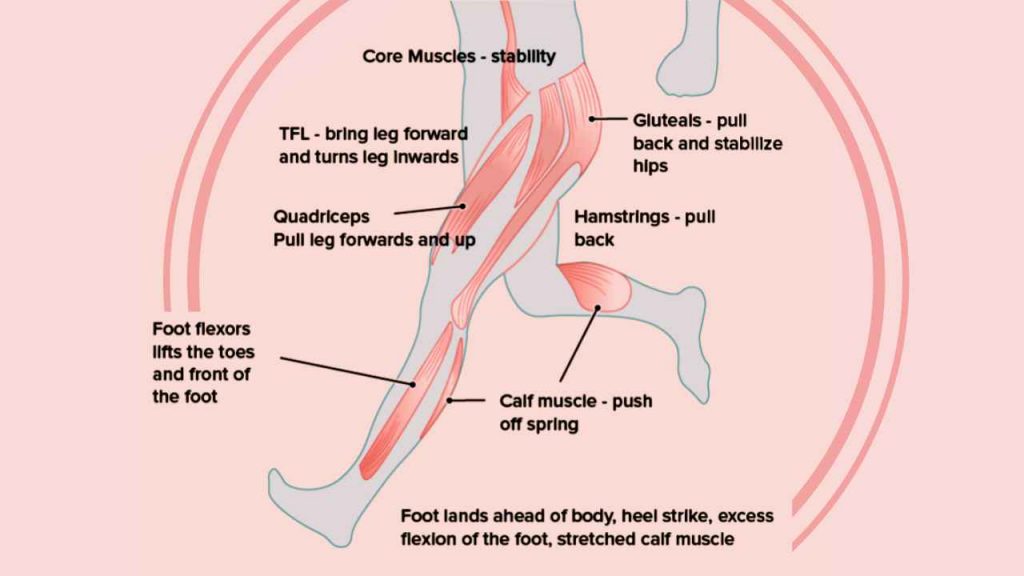
Which are the best leg workouts for runners?
Here are a few leg workouts for long-distance runners that you may include in your training regime:
1. Barbell squat
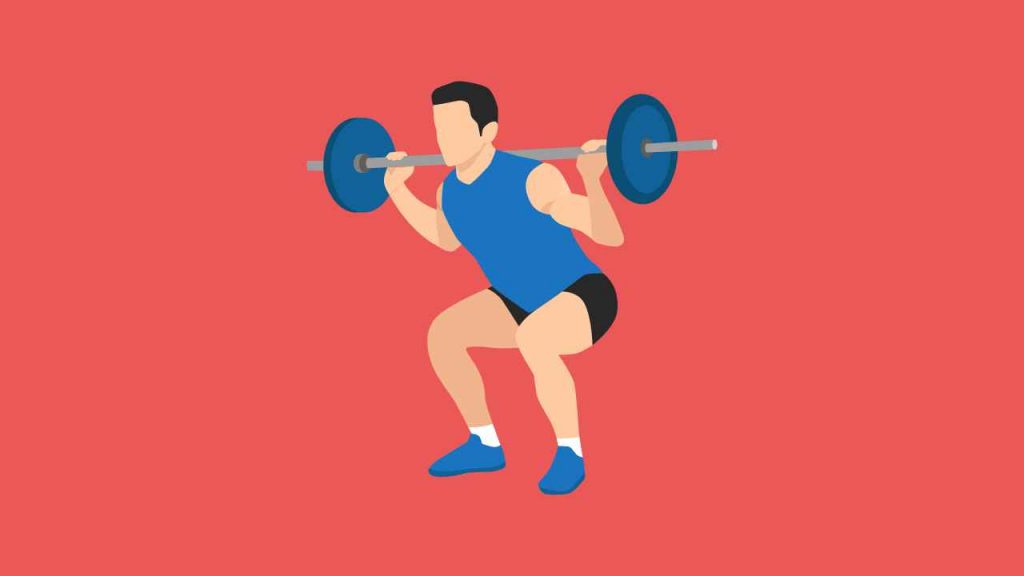
This exercise targets the quads, hamstrings, and glutes. To do this leg workout for runners at the gym, you may duck under a barbell and place your feet exactly below with a shoulder-wide stance. Balance the bar on your shoulder blades and not your neck and lift it off the rack. Bend the knees and lower yourself into a squat until your thighs are parallel to the ground. Do not lean forward and let the bar travel down in the same plane (straight line) as you lower yourself. Slowly return to the start position while keeping your back straight and your hips under the bar. Inhale when you go down and exhale when you rise. Do two to three sets. Each set can comprise eight to 10 reps.
2. Walking lunges
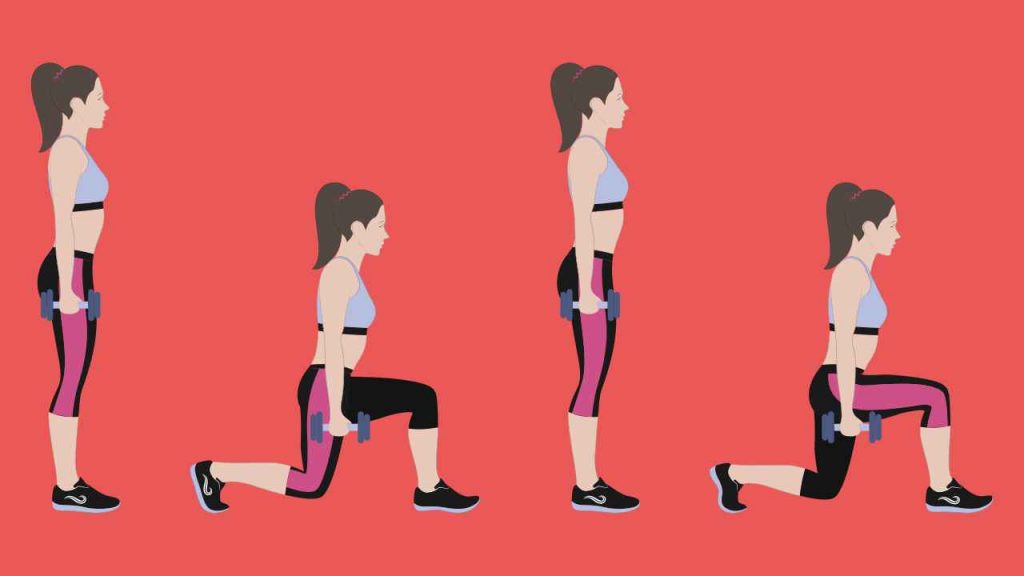
This is one of the best home leg workouts for runners because it trains all the muscles of the legs. Moreover, it aids in loading at the ankle, knee, and hip joint, and improving balance and stability. To perform this leg workout for endurance runners, you need to:
- Stand with your feet hip-width apart. Keep your back straight and tall. Take a step forward with your right foot and plant it roughly 2ft away. This will force you to lift your left heel off the ground. Keep your hands on your hips or use dumbbells in each hand for added weight.
- Engage your core and lower your left knee to the floor, bringing it close to the ground. This will result in your right knee forming a right angle and the thigh coming parallel to the ground.
- Press your right foot firmly into the ground and rise by straightening the right leg. Once you have fully straightened up, swing the left foot forward and plant it similarly about 2ft in front.
- Repeat the same sequence as above and progress in a forward motion.
Do about two to three sets for each leg. A set can comprise four to five lunges for a leg.
3. Deadlift

This is a great leg workout for endurance runners. It helps in training an entire chain of muscles, which include hamstrings, quads, glutes, lower back, and the core. Executing the deadlift with proper form is important for the activation of these muscles.
To do this leg workout for marathon runners, stand with your feet hip-width apart and grasp a barbell a little wider than your hips. In this position, you are bent forward with your chest over the bar. Hinge at your hips, bending slightly at your knees. Push your hips way back, keeping your core engaged so that your back stays flat. Keeping your core tight, push through your heels, and lift the weight, straightening your knees first. Keep your back flat and then reverse the hinge at your hip to stand up. Once you are standing tall with the barbell at hip level, slowly begin to lower it while keeping the back straight. Perform two to three sets. Each set must contain four to six reps.
4. Jump squats
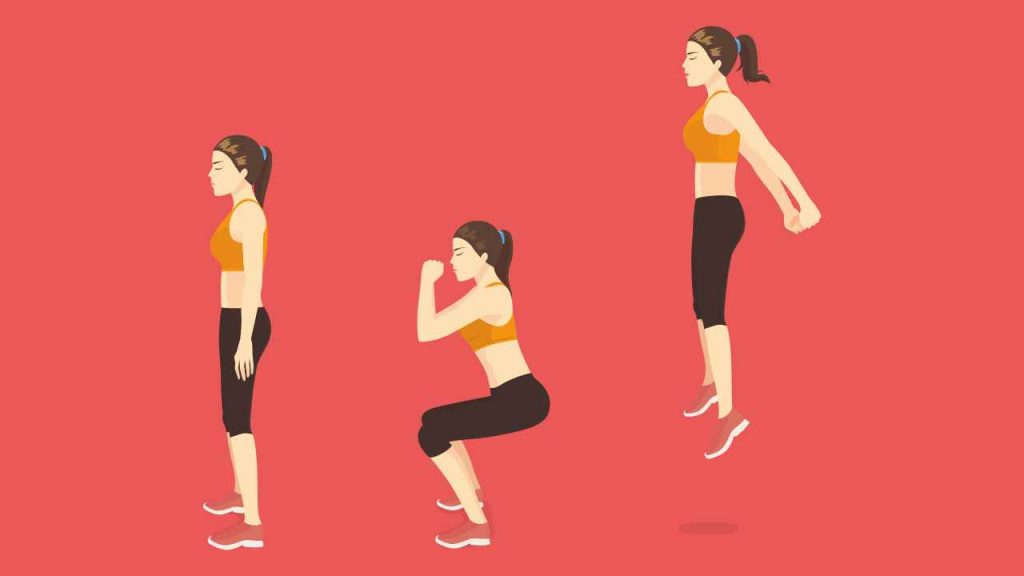
A jump squat is an ideal leg workout for runners at home. It is a power exercise and uses all the muscles, such as your hamstrings, quads, and glutes in a squat. Additionally, it works the calves and core. To do this:
- Stand with feet shoulder-width apart, and keep your knees unlocked
- Descend into a squat using the cues stated above by bending at the knees
- Activate your quads, glutes, and hamstrings and explode off the floor by straightening the knees and hips from their bent position; this will result in lifting your body off the ground, and your feet will be a few inches off the floor. Gravity will cause you to descend.
- Land softly on the ball of your foot and immediately go into the squat position again
- Explode again after landing
- Repeat this process
Do about two to three sets. Each set must have eight to 10 reps.
5. Jump lunges
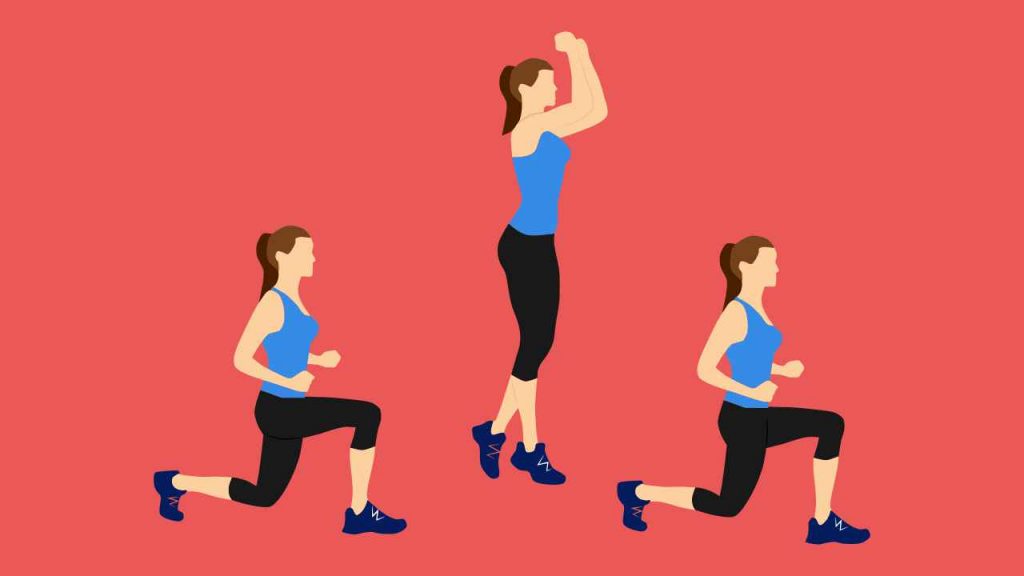
This leg workout for distance runners is an advanced power variation of the walking lunge. It works the glutes, quads, hamstrings, calves, and core muscles. To perform this activity, you may:
- Stand with the left leg in front and the other at the back
- Sink into a lunge (as described for the walking lunge) with your arms bent at right angles
- Explode upward by straightening your legs and keeping the arms bent as soon as the knee of the rear leg comes close to the ground
- Cycle your legs such that the right leg comes forward and the left goes back while moving off the floor and in suspension
- Land softly while descending with the right foot in front and the left foot at the rear; descend immediately into a lunge again
- Explode again as soon as the knee comes close to the ground
- Repeat this activity
Do two to three sets comprising four to five reps for each leg.
You need not isolate lower leg workouts from that of the upper body. By combining strength training for the lower body with that of the upper body and core, you ensure that you have a comprehensive whole body workout. It is advisable to perform leg day workouts for runners twice to thrice per week when not actively racing, and once to twice weekly while preparing for a race. Leg workouts for endurance runners are a good way of building muscle strength, which will translate into better running performance and keep the risk of injury at bay.














